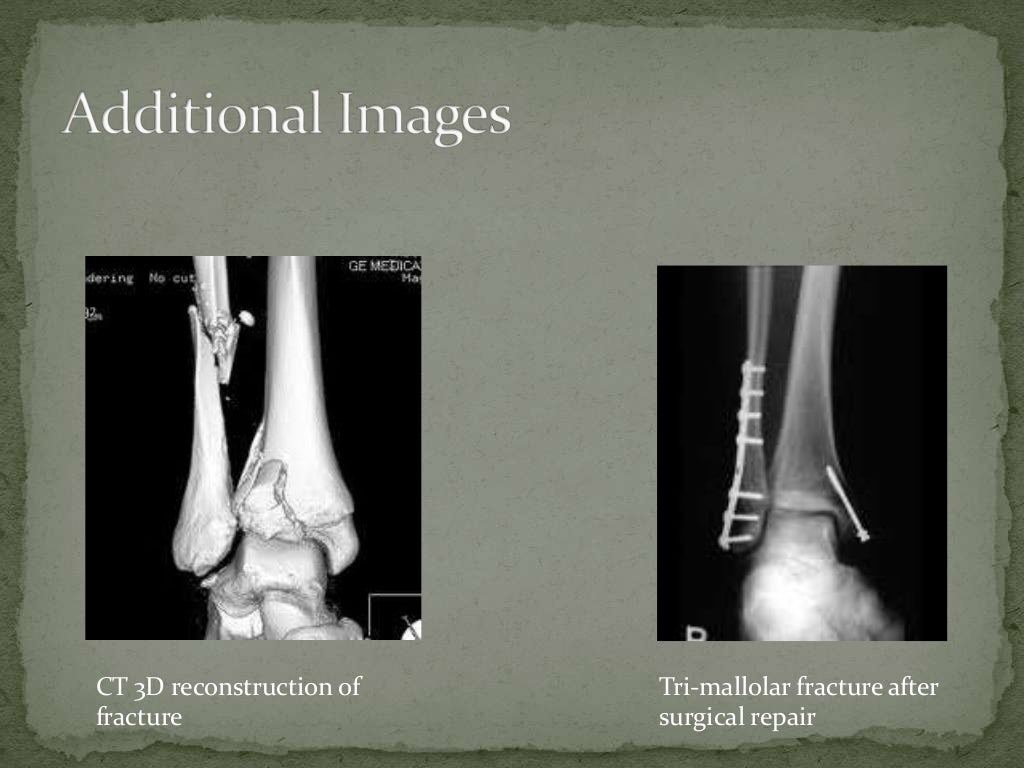
The anterior and posterior talo-fibular, and calcaneo-fibular ligaments (collectively, the lateral collateral ligaments) and.The deltoid ligament medially, connecting the tibia to the talus and calcaneus medially.The ankle joint also contains three important ligament complexes: A fracture affecting both the medial and lateral malleoli is called a bimalleolar fracture, and one involving the medial, lateral, and posterior malleoli, the posterior aspect of the distal tibia, is called a trimalleolar fracture. The lateral malleolus is the distal end of the fibula, whereas the medial and posterior malleoli are part of the tibia. The tibia forms the superior and medial aspects of the joint, and the fibula its lateral aspect. The talus is a cube-shaped bone that sits above the calcaneus and below the tibial plafond. The distal ends of the fibula and tibia that overlap the talus are known as the malleoli (“little hammers”). The ankle joint is made up of the tibia, fibula, and talus (Figure 1). Some residual ankle arthrosis is therefore not uncommon, even if the bone heals perfectly. Ankle fractures directly or indirectly involve the ankle joint. Stable fractures typically heal with immobilization and protected weight-bearing whereas operative management is usually required for displaced or unstable fractures. These are designated as “pilon fractures," and are considered distinctly different injuries. Ankle fractures can be broadly divided into stable or unstable injuries. from a fall) is more apt to produce a fracture of the weight-bearing surface of the distal tibia (the plafond). Twisting with the foot planted on the ground and the body rotating around it is the most common mechanism of injury. Ankle fractures range from simple injuries of a single bone to complex ones involving multiple bones and ligaments.

Occasionally, they involve the shaft of the fibula as well. Ankle fractures are breaks of the distal tibia or fibula (near or in the so-called malleolus) affecting the tibiotalar (ankle) joint.


 0 kommentar(er)
0 kommentar(er)
